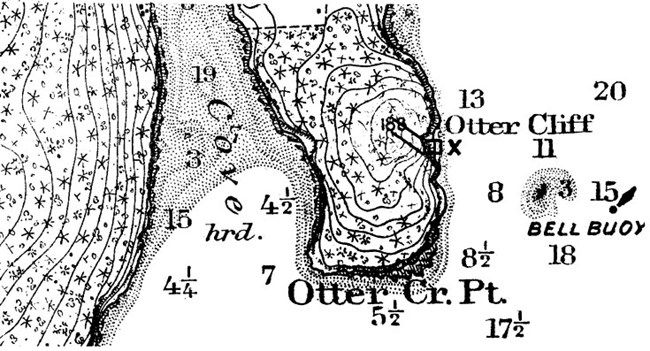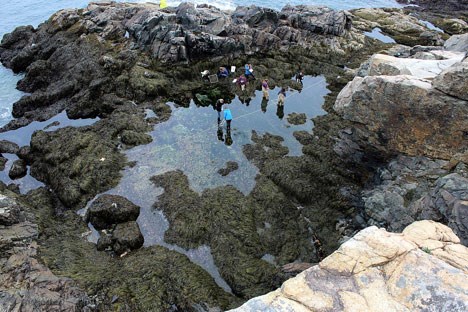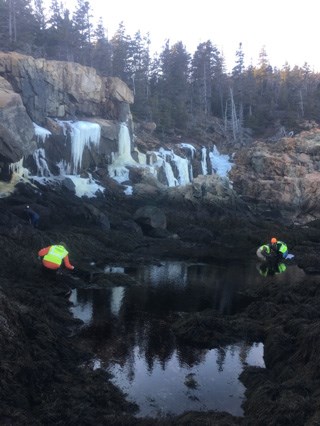Last updated: October 8, 2021
Article
Historical Ecology and Intertidal Algae at Acadia

Courtesy of Chris Petersen

Courtesy of Chris Peteresen

Courtesy of Chris Petersen
When Heather compared the current data with the historical data, she didn’t find support for either of our predicted patterns. The loss and gain of species in our surveys seemed to be random with respect to species geographic range. However, we noticed we had many fewer green algae than in the 1920’s. This may be a real pattern, but it could also be a reflection of our sampling schedule. Until this year, we had done no sampling from December – March, and green algae are typically more abundant in winter and early spring before being grazed by more active herbivores as the season progresses and the weather warms up. Additional winter sampling will clarify whether the green algae are truly less abundant now than they were in the 1920’s.
We did find one trend that we think may be due to climate change. Examining the pictures taken by Johnson and Skutch, it appears that there is much more brown algae in the intertidal now than then. Local ecologists have pointed out that ice scour is now much less common, making it easier for rockweeds to dominate the mid-intertidal zone.
So as I move forward with new students where are we going to take this work? In addition to continued sampling in the winter and spring, two things seem to be important next steps. First, we have identified several introduced algal species that were not listed in the 1920’s or by Mathieson and his colleagues in the 1990’s. We would like to track the abundance of these species over several years to see if they are becoming more dominant, or if, as they currently appear to be doing, they coexist with the other intertidal algae. We are also now interested in looking at the algae growing on the nearby exposed (emergent) intertidal rocks, to see if the same patterns of species diversity and abundance of introduced species that exists in the tide pools is true of that habitat.
